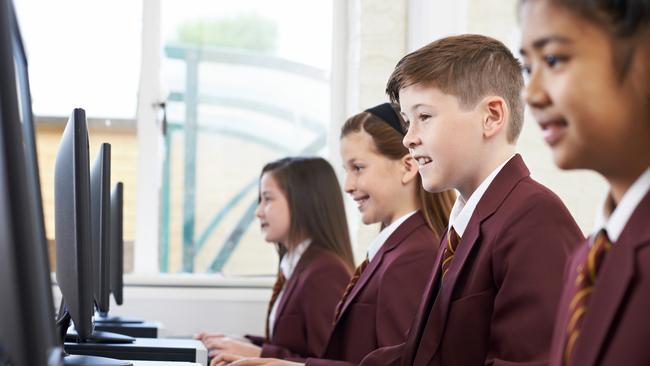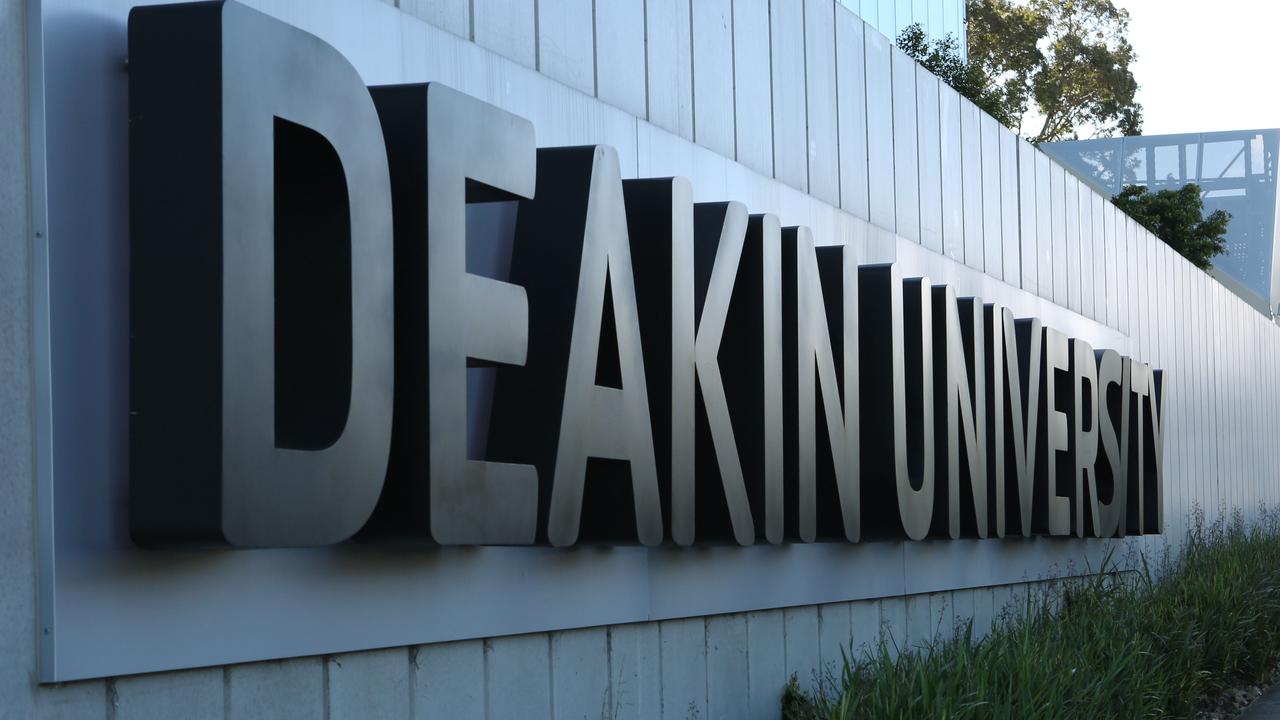Everything you need to know before applying for private school for your child
THINKING about sending your child to a private school? Here’s what you need to know, from applications and waiting lists to fees and enrolment.
Tertiary
Don't miss out on the headlines from Tertiary. Followed categories will be added to My News.
IT can be hard to know where to start when it comes to choosing where to send your child to school.
And whether or not to opt for a private school over a state school is something many parents struggle with.
Does it come down to costs, environment, location, the waiting lists — or your child’s individual strengths?
Independent Schools Victoria chief executive Michelle Green said parents should start by considering the environment that would best suit their child.
INSIDE THE BEST PRIVATE SCHOOLS IN MELBOURNE
PARENTS PAY UP TO $500 TO WAITLIST FOR PRIVATE SCHOOLS
STATE VS PRIVATE: WHO DID BETTER IN VCE?
“Understand your child — their needs, their interests, their strengths and weakness,” she said.
“Because of the diversity in their philosophical backgrounds, their approaches to education and their individual autonomy, many parents find independent schools offer them options and choices to meet the distinct needs of their child.”
She said once parents have worked out what they want their child to get out of the experience, they should research the options available.
“Consider practical questions: the location of the school, the transport options, the fees it charges, the specialisations it might offer, the extra-curricular options, whether its co-ed or single sex, whether it is faith-based or secular, and so on,” she said.
APPLICATIONS
The first step is to apply to your school of choice.
While it’s often said that children need to have their name on the waitlist the moment they’re born to have any chance of being accepted, Ms Green said this isn’t the case.
“Don’t be daunted by stories that all independent schools have long waiting lists,” Ms Green said.
“They are not static.”
“Parents move or drop off waiting lists without informing the school that they have enrolled their child elsewhere.”
Ms Green said looking at the schools’ websites, talking to friends and other parents, and contacting schools directly can help you get a better idea of what their waitlists are like.
When it comes to submitting the application, you will typically have to provide the school with your child’s birth certificate, and other relevant documentation.

Although waitlist fees vary from school to school, it’s best to have a couple of hundred dollars saved for each application, just in case.
Ms Green said the fee parents pay helps to cover the administrative costs of processing and maintaining waitlists.
“Whether a school charges such a fee depends entirely on their own circumstances,” she said.
“In some cases they are deducted from tuition fees if the parent pursues the application and eventually enrols the child.”
INTERVIEW PROCESS
The next step in enrolment is typically the interview.
As interviews are usually held during business hours, it is advisable to organise the appointment well in advance, in case you need to arrange time off work.
Depending on the school, parents may be required to provide supporting documents such as family references.
Ms Green said not all students will necessarily be interviewed before having their application accepted.
“Interviews might not be relevant for students in early years of education.”
Ms Green said older children might also have their academic record examined before enrolment.
“This is to inform the professional judgment of teachers so they have an understanding of the level the child has reached, their strengths and weaknesses,” she said.
“It can also help the school, and the parents, to decide if the school matches the child’s needs.”

COST
As you would expect, providing your child with a private education will cost more than sending them to a public school.
While the tuition fees will likely set you back several thousand dollars a year, you also need to take extra costs such as uniforms, books, technology, transport and extra-curricular activities into consideration.
The Australian Scholarship Group’s Planning for Education Index estimates that it costs just under $25,000 to send a child to a private secondary school in Metropolitan Victoria in 2018.
Your best bet in easing the financial burden is to have your child apply for a scholarship.
Those can provide a full or part reduction of tuition fees, which applies for either the duration of the student’s schooling or a specified number of years.
Although scholarships are typically based on a child’s academic abilities, some schools also offer them for students skilled in sport, music, and language.
For those applying for academic scholarships at prestigious schools like Methodist Ladies’ College and Caulfield Grammar, they’ll be sitting the ACER Scholarship Test.
According to ACER, the tests assess students on a range of skills including their ability to think critically, and are not curriculum-based.
Applications can be made online, and depending on the school, a fee of around $100 may apply.
All the participating schools can be found here.
For the schools that don’t use ACER for their testing, all relevant details should be available on their individual websites.


